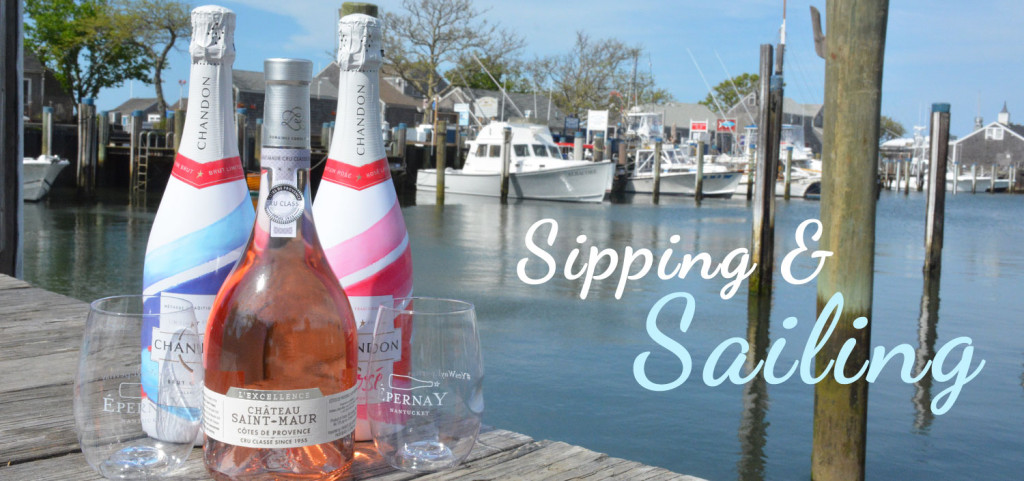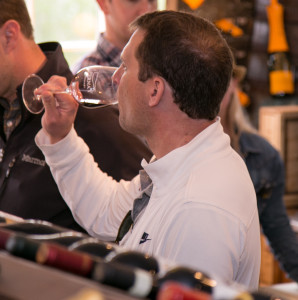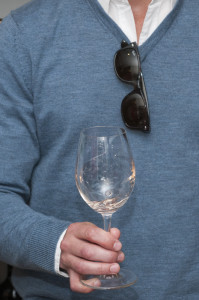
Sipping & Sailing
May 31, 2016BASICS OF THE DRINK: SIP + SAIL TERMS TO LIVE BY
While there is a comprehensive (and somewhat exhausting) list of technical tasting terms that can be used to describe wines, this can be overwhelming to a beginner who just wants to enjoy the social aspects of sipping wine and rubbing elbows on the mega yacht down on the waterfront
If you are just learning how to properly taste wine and describe what you are tasting with others, this quick reference guide of beginner wine terms will provide a helpful overview of words that make it simple to be on the same language (even if you have had a few sips already). In honor of the Nantucket sailing season beginning this last weekend for Memorial Day, we thought it be fun to compare some basic sailing terms with your wine drinking vocabulary.
To start, think of your palate (as in your appreciation for taste and flavor) as a sailing vessel that is charting the great big wine ocean. There are certain areas on your tongue that pick up different sensory components and therefore affect what you taste in a wine.
The aft, also sometimes refer red to as the stern, is the back of a ship, or in wine tasting terms, the back of the palate. This is the area furthest back on your tongue and is responsible for detecting bitterness in wine. This bitterness is described as a sharpness of taste while lacking any sweetness.
red to as the stern, is the back of a ship, or in wine tasting terms, the back of the palate. This is the area furthest back on your tongue and is responsible for detecting bitterness in wine. This bitterness is described as a sharpness of taste while lacking any sweetness.
The bow, as the front of the ship is referred to, would be the tip of your tongue. This is important to give yourself a starting point in order to compare and contrast the level of sweetness (versus being semi-sweet, dry or anywhere in between) that is apparent in the wine.
While Port is to the left of the bow and Starboard is to the right in boating terms, the left and right side of the palate are able to both detect the same sensory components in regards to wine tasting descriptors. Starting from the front and working your way to the back on both sides of the tongue, you will detect salty components, such as saline or brininess) followed by any sour notes present that would affect the perception of acidity in the wine.
These sensory components are discussed on a definitive grading scale, similar to low, medium, high, and avoid using words such as good or bad in your descriptors. Using the term ‘good’ or just saying you don’t like a wine doesn’t allow the person you are discussing the wine with to fully understand how you are describing the wine in a quantitative analysis.
By being able to better assess these four components and know the direction of where they are on the tongue, you will also be able to adequately discuss the aftertaste of a wine. The term is as simple as the taste that remains on the palate after taking a few sips of wine.
The sometimes-called fifth sense of your wine deciphering is termed umami. Umami is most often described as a pleasant savory taste and is the one term that is not quite as definitive as the others. It basically translates into ‘delicious.’ While this is not as quantitative as the other sensory terms, it is more commonly agreed upon as a term that means it is delightful and highly pleasant to the taste.
Tacking, a basic sailing maneuver that refers to turning the bow of the boat through the  wind so that it changes from one side to the other of a sail, is almost the lifeblood when it comes to tasting wine. This would be the act of swirling the wine around in your glass so that you are able the aromas and bouquet of the wine are able to escape and float into the air. You will quickly learn next how this ultimately affects what you taste in the wine.
wind so that it changes from one side to the other of a sail, is almost the lifeblood when it comes to tasting wine. This would be the act of swirling the wine around in your glass so that you are able the aromas and bouquet of the wine are able to escape and float into the air. You will quickly learn next how this ultimately affects what you taste in the wine.
Your smelling apparatus, also known as your nose, is going to be your rudder. The purpose of the rudder is to steer the ship, which is exactly what your olfactory senses do. When you eat and drink, typically the first thing you do is to take a few whiffs of the aromas released from the product. This provides your palate with some anticipation of whatever flavors you may soon be tasting. You can wave your nose briefly over the rim of your glass or use a moderate sniffing technique of inhaling several breathes over a short period of time. A handful of wine tasters prefer to really get their nozzle into the wine glass and take one big sniff (without inhaling the wine itself, of course).
Depending on where the wine lands on your palate is a direct correlation of how the wine gets into your mouth. The boom of wine drinking is considered to be the wine glass you choose to use while imbibing. If the glass happens to be thicker with a rounded lip on the top edge, then the wine will roll out of the glass and launch into your mouth just a like a snowboarder taking a jump over a mogul and not necessarily making a graceful landing – it can end up to be aggressive, chunky and unpleasant. A thinner, more fine in texture type of glass would allow the wine to smoothly roll right out of the bowl and splash delicately onto your mid-palate. This enables the wine to gently land on a larger surface area without attacking just one of your senses.
While it may be a challenge to get invited onto the boat in the first place, mastering these simple wine (and boating) terms and being able to use these words while describing wine will only help to ensure you will easily have permission to board again. And bringing onboard a bottle of Rosé wine, Nantucket’s favorite drink of summer, will only help to impress your nautical hosts even more.

Comments